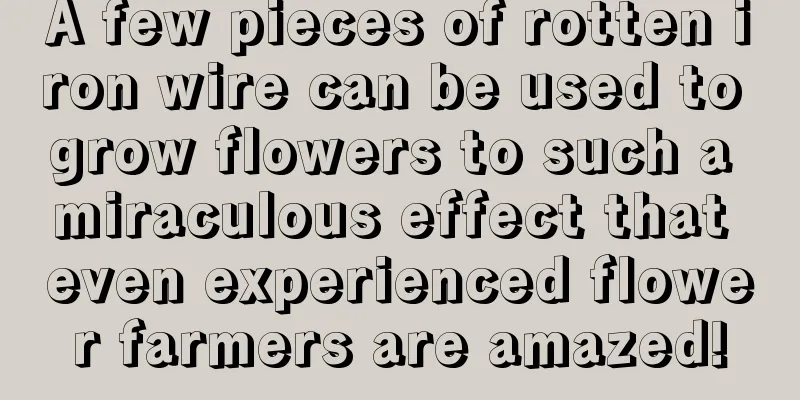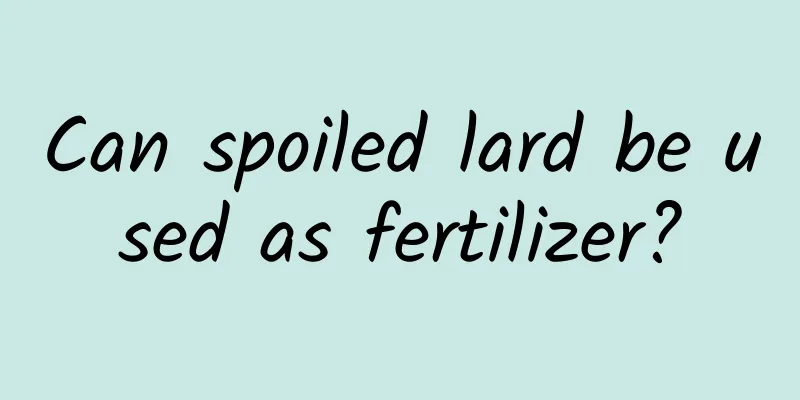Why do we need to cover corn with plastic film when growing it (covering corn with plastic film can increase the yield of corn)

The benefits and methods of film covering for corn plantingWhen planting corn, most farmers choose to plant it directly in the open air, while some farmers choose to plant it under film covering. Both have their own advantages and disadvantages. The reason why we are talking about this issue has to start with two photos sent by a friend (as shown below). These are corns planted in the same area on the same day. The first picture shows film-covered planting, and the second picture shows open-air planting. It can be clearly seen that the corn in the first picture grows faster than the corn in the second picture. According to the friend, film-covered corn can germinate 3-5 days earlier than open-air planting, and its growth is also better. Film mulching is generally used in spring corn planting areas, such as Northeast China, Inner Mongolia, etc. In addition, many farmers in Northwest my country also use it, and there are also small areas in other regions. There are many benefits of growing corn with film covering. The three most common ones or those often mentioned by farmers are heat preservation, moisture retention and fertilizer retention, which ensure the normal growth of corn and increase the final yield. Corn mulch cultivation is to cover the corn with a layer of mulch after sowing, which can utilize solar radiation to increase the ground temperature. Especially in areas where spring corn is planted in April, if a late spring cold snap occurs, the corn will be greatly affected. For corn that has just been planted, it may not germinate, and for corn in the seedling stage, it may die due to frost damage. In addition, it can also reduce the heat loss of the soil surface and increase the accumulated temperature. In addition, the problem of rats, birds, pheasants, etc. eating seeds, which was a headache for corn planting in previous years, has also been well solved due to the covering film. The seeds are covered under the mulch to prevent them from being eaten. Another point is that in the case of mulch planting, the weeds in the field are relatively less. You can observe the plots covered with mulch and those planted in the open air, and the area of weeds will be more obvious. As mentioned at the beginning, corn covered with film can germinate 3-5 days earlier than corn grown in the open air. In this case, the corn planted at the same time will ear and mature earlier. When it is harvested, the grain weight will increase compared to the case of open-air planting, which will ultimately increase the yield . Although there are many benefits to film mulching for planting, in the actual planting process, many growers do not take this measure. After asking some farmers, we got two main answers. First, covering the ground with mulch is relatively troublesome. It is better if the planting area is small, but it takes more time if the planting area is large . Secondly, it will increase costs. The cost of plastic film for one acre may seem low, but when there are more plots of land, the cost will be high . From another perspective, if one acre of corn is planted, with a yield of 1,000 jin per acre and a price of 0.95 yuan per jin, the final net profit of one acre is limited. Therefore, for many farmers, they would not increase costs if they can reduce them. |
<<: What is the reason for tomato fruit cracking?
Recommend
What to do if the leaves of Zi Chi Nian Hua turn yellow
Reason 1: Insufficient light As for the habits of...
Fujian local vegetable varieties pictures What are Fujian local specialty vegetables
In summer, the temperature in Fujian is relativel...
5 tips for watering flowers in summer
Water Quality When it comes to choosing water, th...
How many pounds of Wogan per mu is produced? How much is the approximate output value per mu?
Yield of Wogan per mu As a common fruit, Wogan wi...
How to propagate Monstera
1. Seed propagation This method first requires co...
Geraniums bloom into large balls, so beautiful
Tip 1: Topping Whether it is a geranium grown by ...
Cultivation methods and precautions of Chinese Platycodon grandiflorum
Chinese Platycodon grandiflorum is very easy to g...
Does the drug-addicted grass bloom?
Does the drug-addicted grass bloom? The drug-suck...
Is wolfberry a shade-loving or sun-loving plant?
Does wolfberry prefer shade or sun? Wolfberry is ...
What flowers are suitable for growing in Shangrao? What are the city flowers and trees?
Shangrao has a subtropical humid climate with a co...
What to do if water lily leaves turn yellow
reason Failure to water frequently will cause new...
Changes in plants in winter, changes in plants in autumn
1. Changes in plants during winter Abnormal depre...
The difference between Camellia oleifera and Camellia
1. Leaf Difference The leaves of Camellia oleifer...
Cutting propagation method of double-heart fur grass
Cutting propagation time of double heart fur gras...
Why does Poinsettia drop its leaves?
1. Too much light Poinsettia likes light. Under t...









